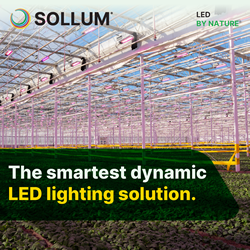Rehabilitation via vertical farming trialled for the first time in UK prisons
Tech Innovations Protecting the Agriculture Industry from Invasive Species
AgriCapture doubles Soil Enrichment Project; Expands to over 110,000 acres of regenerative farmland
Vertical Farming: Location a Key Factor to Success, Says IDTechEx
The World of Future Farming and Artificial Intelligence
New Air Source Heat Pumps provide energy efficient heating for garden centre whilst reducing CO2 emissions
Controlled Environment Agriculture: A Fertile Landscape for Robot Suppliers
INFARM STARTS OPERATING ONE OF EUROPE'S LARGEST VERTICAL FARMING FACILITIES IN BEDFORD. POTENTIAL TO SERVE 90% OF THE UK POPULATION
The Potential for Using Smartphones for Soil Nutrient Testing
FlexFarming Tackles Industry Challenges With Its Indoor Vertical Farm To Grow Strawberries
Avoid These Five Mistakes When Choosing Food-grade Conveyors, Says Ultimation Industries
21 Acres -- Extreme precipitation threatens food security and drives up local food costs
Wilbur-Ellis Partners with Guardian Agriculture in Multi-Million Dollar Agreement to Bring Autonomous Aerial Application to Growers Across America
Innovative Energy-Saving Solar Greenhouse Idea Wins Schneider Go Green Student Competition
What Technology is Needed to Properly Develop and Maintain Soil Health
Records 406 to 420 of 916
First | Previous | Next | Last
Featured Product

